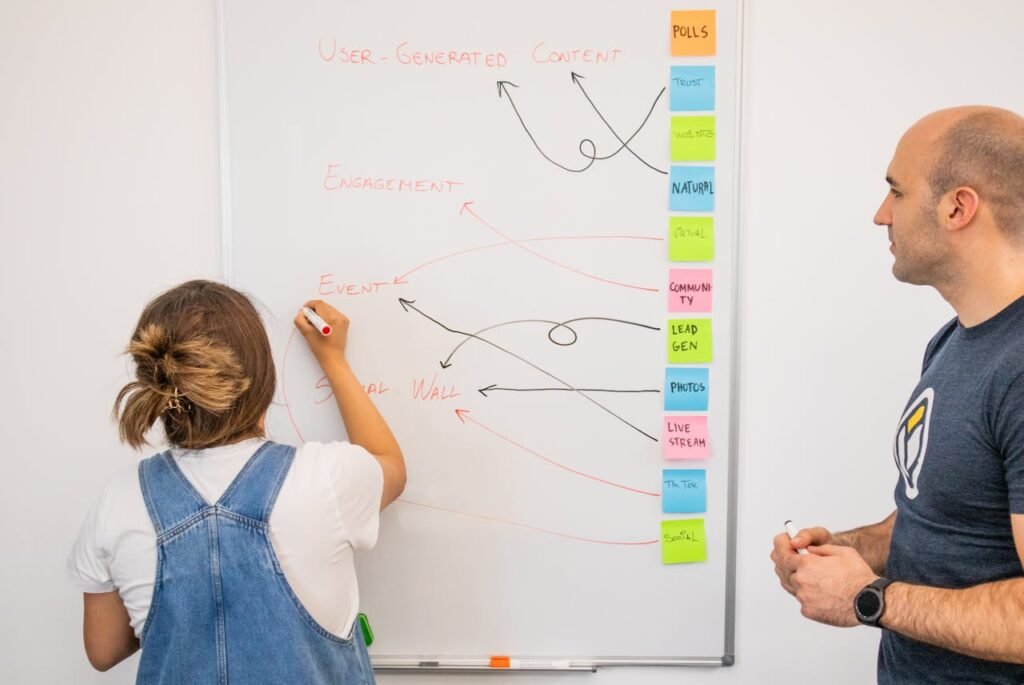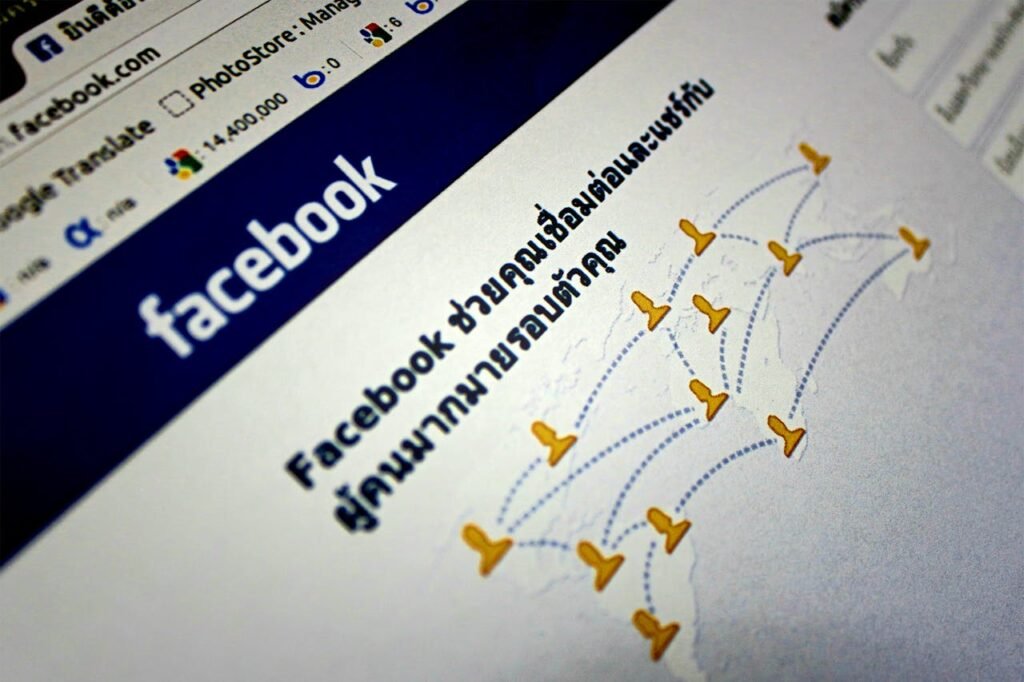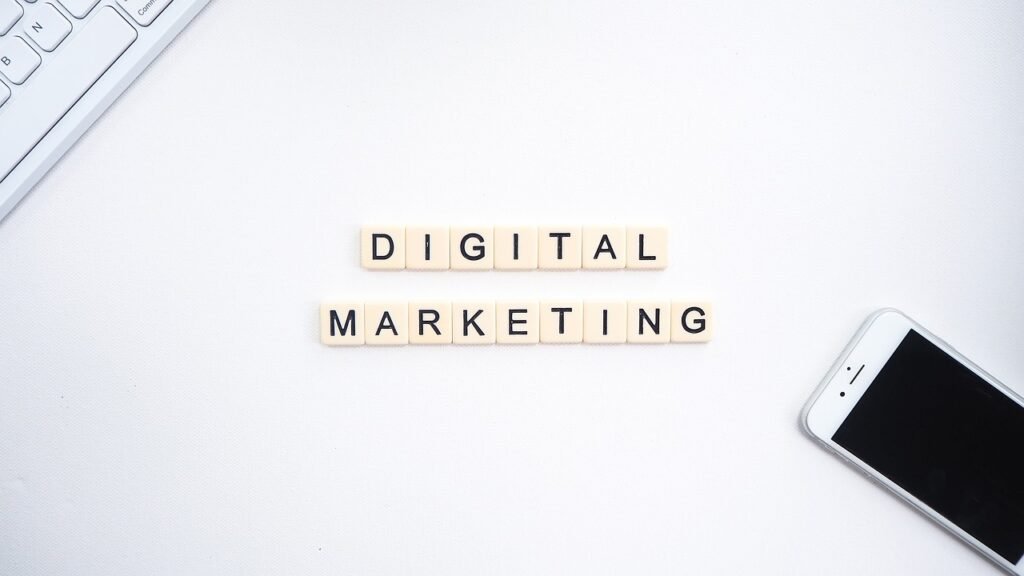Marketing activation campaigns are powerful tools to engage your audience, build brand awareness, and drive conversions. They involve creating memorable experiences that connect with consumers on a deeper level, making them more likely to engage with your brand.
Understanding Marketing Activation
What is Marketing Activation?
Marketing activation is about bringing a brand to life through experiences and interactions that drive consumer action.
Unlike traditional marketing, which often focuses on broad awareness, activation aims to create a direct and impactful connection with your audience. This can involve in-person events, digital experiences, or a combination of both.
The goal is to inspire immediate action, whether it’s making a purchase, signing up for a service, or sharing content.
The Importance of Marketing Activation
Marketing activation is crucial because it moves beyond awareness and focuses on driving consumer behavior.
It’s about creating experiences that resonate with your audience and motivate them to take action.
This approach can lead to higher engagement, increased loyalty, and better conversion rates. By connecting with consumers in meaningful ways, you can build stronger relationships and achieve your marketing goals more effectively.
Types of Marketing Activation
There are various types of marketing activation, each suited to different objectives and audiences. Some common types include experiential marketing, in-store promotions, digital activations, and event sponsorships.
Understanding the different types can help you choose the right approach for your campaign and ensure it aligns with your goals.
Setting Clear Objectives
Define Your Goals
Before you start planning your activation campaign, it’s essential to define your goals. What do you want to achieve?
Your goals should be specific, measurable, achievable, relevant, and time-bound (SMART).
Whether you aim to increase brand awareness, boost sales, or engage with a new audience, having clear objectives will guide your strategy and help you measure success.
Identify Key Performance Indicators (KPIs)
Once you have defined your goals, identify the key performance indicators (KPIs) that will help you track progress. KPIs could include metrics such as the number of attendees at an event, social media engagement, website traffic, or sales figures.
Monitoring these metrics will allow you to evaluate the effectiveness of your campaign and make data-driven decisions.
Understand Your Audience
Knowing your audience is crucial for planning a successful activation campaign. Conduct research to gather insights into their preferences, behaviors, and pain points.
Use surveys, focus groups, and social media analytics to gather data.
Understanding your audience will help you tailor your campaign to meet their needs and create experiences that resonate with them.
Crafting a Compelling Concept
Brainstorm Creative Ideas
The concept of your activation campaign should be creative and aligned with your brand values. Gather your team for a brainstorming session to generate ideas.
Think about how you can create memorable experiences that engage your audience.
Consider incorporating interactive elements, storytelling, and unique visuals. Your concept should be original and stand out from the competition.
Align with Your Brand
Ensure that your campaign concept aligns with your brand identity and messaging.
The activation should reflect your brand’s values and personality. Consistency is key to building brand recognition and trust.
Use your brand’s colors, logos, and tone of voice throughout the campaign to create a cohesive experience.
Plan the User Experience
A successful activation campaign provides a seamless and enjoyable user experience. Plan every detail of how consumers will interact with your campaign.
Consider the journey from the initial touchpoint to the final action. Make sure the experience is intuitive and accessible.
Pay attention to logistics, such as event layout, digital platform usability, and customer support.
Choosing the Right Channels
Select Appropriate Channels
Choosing the right channels to execute your campaign is critical. Depending on your goals and audience, you might use a mix of online and offline channels.
Social media platforms, email marketing, and your website are great for digital activations. In-person events, pop-up shops, and retail partnerships can be effective for experiential marketing.
Select channels that will best reach your target audience and amplify your message.
Integrate Multiple Channels
Integrating multiple channels can enhance the reach and impact of your campaign. Create a cohesive strategy that leverages the strengths of each channel.
For example, use social media to generate buzz before an event, email marketing to provide detailed information, and your website to host interactive elements.
Cross-channel integration ensures a consistent message and maximizes engagement.
Use Influencers and Partnerships
Collaborating with influencers and partners can extend your campaign’s reach. Identify influencers who align with your brand and have a strong connection with your target audience.
Partnerships with complementary brands can also add value and attract new audiences.
Work with influencers and partners to create authentic content that promotes your activation and drives engagement.
Executing the Campaign

Develop a Detailed Plan
A detailed plan is essential for the successful execution of your activation campaign. Outline all the steps required, from concept development to post-campaign analysis.
Assign responsibilities to team members and set deadlines to ensure everything runs smoothly. Include details such as event logistics, content creation, promotional activities, and contingency plans.
Create Engaging Content
Content is a crucial component of your activation campaign. Develop high-quality content that aligns with your concept and engages your audience.
This could include videos, blog posts, social media updates, emails, and interactive elements. Ensure your content is visually appealing, informative, and aligned with your brand messaging.
Use storytelling techniques to create an emotional connection with your audience.
Promote Your Campaign
Promotion is key to attracting attention to your activation campaign. Use a mix of marketing channels to reach your audience. Social media advertising, email marketing, and influencer collaborations can help spread the word.
Create a sense of urgency with countdowns, teasers, and exclusive previews.
Use your existing network to amplify your reach by encouraging employees, partners, and loyal customers to share your campaign.
Ensure Seamless Execution
On the day of your activation, ensure everything runs smoothly. If it’s an in-person event, make sure the venue is set up correctly and all necessary equipment is in place.
For digital activations, ensure your website and online platforms are functioning properly.
Have a team ready to handle any issues that arise. Providing a seamless experience is crucial for leaving a positive impression on your audience.
Engaging Your Audience
Encourage Participation
Engagement is the heart of a successful activation campaign. Encourage your audience to participate actively. Use interactive elements such as games, quizzes, and live polls.
For in-person events, offer hands-on experiences and opportunities for direct interaction with your brand.
For digital campaigns, use features like live chats, comment sections, and user-generated content to foster engagement.
Capture and Share Moments
Documenting and sharing moments from your activation can amplify its impact. Hire a professional photographer or videographer to capture high-quality images and videos.
Share these moments on your social media channels, website, and email newsletters. Encourage attendees to share their own experiences using a dedicated hashtag.
User-generated content can extend the reach of your campaign and create a sense of community.
Offer Incentives
Incentives can motivate your audience to participate and engage with your campaign. Offer exclusive discounts, freebies, or chances to win prizes.
Ensure that the incentives are relevant and valuable to your audience.
Clearly communicate how they can earn or win these incentives to encourage active participation.
Measuring Success
Track Key Metrics
Measuring the success of your activation campaign is essential for understanding its impact and identifying areas for improvement. Track key metrics that align with your goals and KPIs.
These might include attendance numbers, social media engagement, website traffic, lead generation, and sales conversions.
Use analytics tools to gather and analyze this data.
Gather Feedback
Feedback from your audience can provide valuable insights into the effectiveness of your campaign. Use surveys, social media polls, and direct feedback to gather opinions from participants.
Ask questions about their overall experience, what they enjoyed, and what could be improved.
Use this feedback to refine your future campaigns and enhance your strategies.
Analyze and Reflect
Once your campaign is over, take the time to analyze the results and reflect on the outcomes. Compare your performance against your initial goals and KPIs.
Identify what worked well and what didn’t. Consider the feedback from your audience and any challenges you encountered.
Use these insights to improve your planning and execution for future campaigns.
Report on Results
Sharing the results of your campaign with your team and stakeholders is important for transparency and learning.
Create a comprehensive report that includes key metrics, feedback, and an analysis of the campaign’s performance.
Highlight successes and areas for improvement. Use this report to inform future marketing strategies and ensure continuous improvement.
Post-Campaign Engagement
Follow Up with Participants
Following up with participants after your campaign can help maintain engagement and build lasting relationships. Send thank-you emails, share highlights from the campaign, and provide additional resources or offers.
Keep the conversation going by encouraging them to stay connected with your brand through newsletters, social media, and future events.
Repurpose Content
Repurposing content from your activation campaign can extend its life and reach. Use photos, videos, and testimonials gathered during the campaign to create new content for your marketing channels.
Write blog posts, create case studies, and share success stories.
Repurposing content helps you maximize the value of your campaign and keep your audience engaged.
Plan for the Future
Use the insights gained from your activation campaign to plan for future initiatives. Continuously improve your strategies based on feedback and performance data.
Stay creative and open to new ideas. Successful marketing activation is an ongoing process that requires adaptation and innovation.
By learning from each campaign, you can create even more impactful experiences in the future.
Leveraging Technology for Activation Campaigns
Use AR and VR Experiences
Augmented Reality (AR) and Virtual Reality (VR) can provide immersive experiences that captivate your audience. Use AR to create interactive elements that people can engage with using their smartphones.
VR can offer virtual tours or simulations that allow your audience to experience something unique from the comfort of their own home.
These technologies can make your activation campaign more memorable and engaging.
Implement Chatbots for Engagement
Chatbots can enhance your digital activation efforts by providing real-time interaction and support. Use chatbots to answer common questions, guide users through your campaign, or provide personalized recommendations.
Chatbots can help keep your audience engaged and ensure they have a smooth experience throughout the campaign.
Utilize Live Streaming
Live streaming can expand the reach of your activation campaign by allowing people to participate from anywhere.
Host live events, product launches, or Q&A sessions on platforms like Facebook Live, Instagram Live, or YouTube.
Promote your live streams in advance and encourage interaction during the event. Live streaming creates a sense of urgency and exclusivity, driving more engagement.
Creating a Community Around Your Brand

Build an Online Community
Creating an online community around your brand can foster long-term engagement and loyalty. Use social media groups, forums, or dedicated community platforms to connect with your audience.
Encourage members to share their experiences, ask questions, and provide feedback.
Regularly participate in these communities to build relationships and maintain a strong presence.
Engage with User-Generated Content
User-generated content (UGC) can significantly enhance your activation campaign by showcasing authentic experiences from your audience. Encourage participants to share their own content using a branded hashtag.
Feature UGC on your social media channels, website, and other marketing materials.
Engaging with UGC not only amplifies your campaign but also builds a sense of community and belonging among your audience.
Host Exclusive Events for Your Community
Exclusive events for your community can deepen their connection with your brand. Host VIP events, behind-the-scenes tours, or special meet-and-greets for your most loyal supporters.
These events make your community feel valued and appreciated, fostering stronger relationships and long-term loyalty.
Enhancing Personalization
Collect and Utilize Data
Data collection is crucial for personalization. Gather data on your audience’s preferences, behaviors, and interactions with your brand.
Use this data to tailor your activation campaign to meet their specific needs and interests.
Personalized experiences can drive higher engagement and satisfaction.
Segment Your Audience
Segmenting your audience allows you to create more targeted and relevant activation campaigns. Divide your audience into groups based on factors such as demographics, behavior, and engagement levels.
Develop tailored messages and experiences for each segment. Segmentation ensures that your campaign resonates with different parts of your audience, increasing its effectiveness.
Use Personalized Communication
Personalized communication can enhance the impact of your activation campaign.
Address your audience by name, reference their past interactions with your brand, and provide relevant recommendations.
Personalized emails, messages, and offers can make your audience feel valued and understood, driving higher engagement and conversion rates.
Sustainable and Ethical Activation Campaigns
Focus on Sustainability
Sustainability is becoming increasingly important to consumers. Plan your activation campaign with sustainability in mind.
Use eco-friendly materials, minimize waste, and promote sustainable practices. Highlight your commitment to sustainability in your campaign messaging.
Sustainable activation campaigns can resonate with environmentally conscious consumers and enhance your brand’s reputation.
Promote Ethical Practices
Ethical practices are essential for building trust and credibility. Ensure your activation campaign is inclusive, transparent, and respectful.
Avoid misleading claims and ensure all aspects of your campaign align with your brand’s values.
Promoting ethical practices can strengthen your brand’s reputation and build lasting relationships with your audience.
Engage in Corporate Social Responsibility
Incorporating corporate social responsibility (CSR) into your activation campaign can make a positive impact.
Partner with nonprofits, support community initiatives, or raise awareness for social causes. Highlight your CSR efforts in your campaign to show your audience that your brand is committed to making a difference.
CSR-focused activation campaigns can attract socially conscious consumers and enhance your brand’s image.
Post-Campaign Strategies
Conduct a Thorough Review
After your activation campaign, conduct a thorough review to evaluate its success. Analyze performance data, gather feedback from participants, and assess the overall impact. Identify what worked well and what could be improved.
A comprehensive review can provide valuable insights for future campaigns.
Share Success Stories
Sharing success stories from your activation campaign can build momentum and encourage further engagement.
Highlight key achievements, share testimonials, and showcase the impact of your campaign. Use various channels such as your website, social media, and email newsletters to share these stories.
Success stories can reinforce the effectiveness of your campaign and inspire ongoing support.
Plan Follow-Up Campaigns
Follow-up campaigns can maintain the momentum generated by your activation.
Plan additional activities, events, or promotions to keep your audience engaged. Use the insights gained from your initial campaign to refine your strategies and create even more impactful follow-up efforts.
Continuous engagement helps build stronger relationships and drive long-term loyalty.
Building a Holistic Activation Strategy
Integrate with Overall Marketing Plan
Ensure that your activation campaigns are integrated with your overall marketing plan. Align your activation efforts with broader marketing goals and strategies.
Consistency across all marketing activities strengthens your brand message and maximizes impact.
A holistic approach ensures that all parts of your marketing efforts work together seamlessly.
Foster Cross-Functional Collaboration
Successful activation campaigns often require collaboration across different departments. Foster cross-functional collaboration between marketing, sales, customer service, and product teams.
Working together ensures that all aspects of the campaign are well-coordinated and that everyone is aligned with the campaign goals.
Collaboration enhances creativity and ensures a more comprehensive execution.
Focus on Customer-Centric Strategies
Putting the customer at the center of your activation campaigns is crucial. Focus on creating experiences that genuinely meet their needs and provide value.
Use customer insights to drive your strategies and continuously seek ways to enhance their experience.
A customer-centric approach builds stronger connections and drives long-term loyalty.
Measuring Long-Term Impact

Set Up Long-Term Tracking
To understand the long-term impact of your activation campaign, set up tracking mechanisms that monitor key metrics over time.
Use tools like Google Analytics, CRM systems, and social media analytics to track ongoing engagement, conversions, and customer retention.
Long-term tracking helps you see how the campaign influences your brand’s growth and customer relationships beyond the initial activation period.
Analyze Customer Retention
Customer retention is a critical metric for measuring the success of your activation campaign. Analyze data to see if the campaign has led to an increase in repeat customers or improved loyalty.
Look at metrics such as repeat purchase rates, subscription renewals, and continued engagement on your digital platforms.
High retention rates indicate that your activation campaign successfully created lasting connections with your audience.
Evaluate Brand Perception
Assessing how your activation campaign has influenced brand perception is essential. Conduct surveys and focus groups to gather qualitative data about how your audience views your brand.
Monitor online reviews, social media mentions, and brand sentiment analysis to gauge public perception.
Positive changes in brand perception can validate the success of your campaign in enhancing your brand image.
Measure ROI
Calculating the return on investment (ROI) of your activation campaign helps determine its financial effectiveness.
Compare the costs of the campaign against the revenue generated, considering both direct sales and longer-term gains such as increased customer lifetime value.
A positive ROI indicates that the campaign was financially successful and contributed to your bottom line.
Case Studies and Examples
Successful Activation Campaigns
Looking at examples of successful activation campaigns can provide inspiration and insights.
For instance, consider Coca-Cola’s “Share a Coke” campaign, which personalized bottles with popular names. This campaign engaged consumers by encouraging them to find bottles with their names and share their experiences on social media.
The result was a significant boost in brand engagement and sales.
Learning from Failures
Studying less successful campaigns can also be valuable. Analyze why certain campaigns didn’t perform as expected and identify lessons learned.
Common issues might include poor planning, lack of alignment with the brand, or insufficient promotion.
Understanding these pitfalls can help you avoid similar mistakes and improve your future campaigns.
Tailoring Strategies to Your Brand
Every brand is unique, and what works for one may not work for another. Tailor your activation strategies to fit your brand’s identity, goals, and audience.
For example, a luxury brand might focus on exclusive, high-end experiences, while a tech startup could leverage innovative digital interactions.
Customizing your approach ensures that your campaign resonates with your audience and aligns with your brand values.
Incorporating Feedback and Continuous Improvement
Implement Feedback Loops
Feedback loops are essential for continuous improvement. Collect feedback from participants during and after your campaign.
Use surveys, social media polls, and direct interactions to gather insights. Implement changes based on this feedback to enhance your future campaigns.
A responsive approach shows your audience that you value their input and are committed to providing the best experiences.
Adapt and Evolve
Marketing activation is not a one-time effort but an ongoing process. Continuously adapt and evolve your strategies based on performance data and feedback.
Stay updated with industry trends and technological advancements to keep your campaigns fresh and relevant.
Flexibility and willingness to innovate are key to maintaining engagement and achieving long-term success.
Celebrate and Share Successes
Celebrating and sharing your successes can boost morale and inspire your team and audience.
Highlight milestones, achievements, and impactful moments from your campaigns. Use internal meetings, social media, and newsletters to share these successes.
Recognizing and celebrating achievements fosters a positive culture and reinforces the value of your marketing efforts.
Wrapping it up
Planning successful marketing activation campaigns requires a strategic approach, creativity, and a deep understanding of your audience.
By setting clear objectives, crafting compelling concepts, choosing the right channels, and ensuring seamless execution, you can create memorable experiences that drive consumer action. Engaging your audience, measuring success, and continuously improving based on feedback are crucial for long-term impact.
Leveraging technology, building a community, and focusing on customer-centric strategies further enhance your efforts. With dedication and innovation, your marketing activation campaigns can significantly boost engagement, build strong brand relationships, and achieve your marketing goals.
READ NEXT:
- Empowering Social Media Post Ideas for International Women’s Day
- Creative Social Media Post Ideas for Digital Marketing Agencies
- Tech-Savvy Social Media Content Ideas
- Spring into Action with Social Media Ideas for April
- Autumnal Social Media Ideas for October






















Comments are closed.